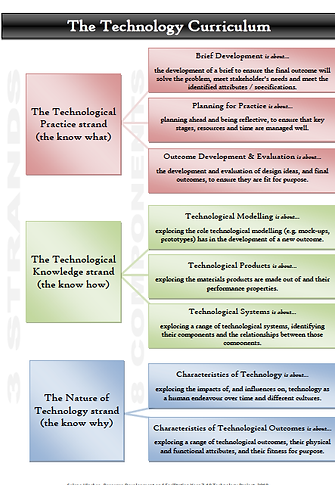Links to Technology Curriculum:
The Nature of Technology covers:
-
what is the technology, how does it work
-
what is purpose of this particular technology,
-
how is it reflected in a changing society, and
-
how this technology context can increase peoples capability.
The Nature of Technology: Students will research how the characteristics of technology play an important role in Robotics. They will investigate key fundamental questions such as what is the purpose of Robotics? How is the use of robotics reflected in and how does it change society? And how does it increase people’s capability around the world? Students will also reflect and make judgments on the ethical decisions and codes of practice that have to be made when robotics is used in certain professions.
The Technological Knowledge & Practice covers:
-
identifying outcomes
-
developing concept designs
-
recording plans and briefs
-
developing models and refining these through prototyping
-
system analysis – identifying parts and how they work together including materials used
-
examining fully realised products and applying the knowledge gained to their own projects
Technological Knowledge: Students will work in a group, building their knowledge of technology, unpacking the key ideas of functional modeling by talking, drawing, testing, trialling, patterning and prototype modeling. Students will also research materials that Robotics products are made from and their specific purpose. They will investigate how materials can be manipulated and/or transformed. Students will have to select specific materials to suit their purpose. A major part of Robotics will be understanding and designing robotics systems, utilizing inputs, outputs, control systems, connections between components, logic systems, technical language and symbols and subsystems that contribute to the function of robotics.
Technology Practice strand is where students develop, practice and build Robots! They will gain knowledge of the robotics technical pieces and sensors by constructing robots following technical diagrams and programming charts. Students will then have to plan and trial sensors and programming to build a robot for a specific purpose. They will have to evaluate suitability of resources, trial materials and refine, modify and reflect against how their robot meets its purpose. They will use the Lego NXT Mindstorm programing planning tools and templates.
Connections to Maths Curriculum Area
Measurement
-
Students will use appropriate scales, devices, and metric units for length, area, temperature, angle, and time using diagrams when constructing Lego NXT robots.
-
During Lego NXT robotics programming, students will convert metric units, using whole numbers and commonly used decimals. Use side or edge lengths to find the perimeters and areas of rectangles. Interpret and use scales, timetables, and charts.
Geometry
-
During Lego NXT robotics programming by communicating and interpreting locations and directions, using compass directions, distances, and grid references.
-
During construction of Lego NXT robots, students will Identify and classify two- and three-dimensional shapes by their geometric properties. Relate three-dimensional models to two-dimensional representations, and vice versa.
-
Students will learn how to use the invariant properties of figures and objects under transformations (reflection, rotation, translation, or enlargement) when using Lego NXT Robotics construction diagrams.
Number and Algebra
-
Graphs, tables, and rules to describe linear relationships found in patterns when programming robots.
How is Robotics used in technology?
What do we do?
Robotics is the branch of technology that focuses on design, construction, operation, development and application of robots. In creating and making robots work, students use computer systems to control, provide sensory feedback and create computer programming processing codes to control a robots function. In Robotic technology classes at RPS the students will be learning about the relevance of robotics as well as the purpose and changes that robotics are making within society.
During Robotic Tech / inquiry sessions students will:
- gain basic mechanical vocabulary and understanding of systems such as axles, gears, servos, pulleys and motors.
- consider all parts of research, mechanical construction, artistic creation, computer programming, problem solving
- work in a team environment by co-operating with others.
- This particular technology inquiry has strong connections to the NZ Science Curriculum.




